Havanese vs Maltese – Dog Breed Comparison (with Photos!)
If you prefer small dog breeds, it can be challenging to pick your favorite, especially between the Havanese vs Maltese types. However, both these dog types make terrific companions and are suitable for many lifestyles.
However, there are some significant differences between these two, which can help you choose the better pet for your situation.
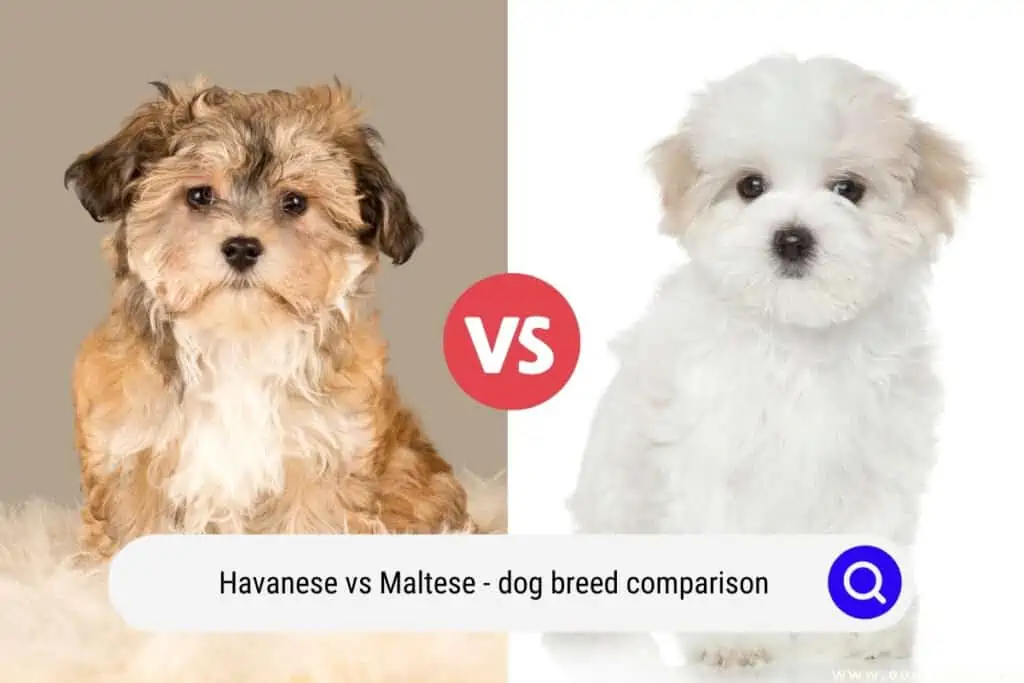
Comparing the Havanese vs Maltese
Let’s dive into what makes each of these breeds unique. For easy comparison, we will explore these attributes:
- Size
- Color
- Coat
- Grooming and care
- Feeding
- Temperament
- Energy level
- Lifespan
- Health Issues
Size
In terms of height, both these dog breeds are relatively similar. The Havanese will grow between 8 and 11 inches tall, while the full-grown Maltese range from 8 to 10 inches.
However, their total body weight differs, making a clear distinction between them. For example, Havanese dogs can weigh 7 to 13 pounds, making them larger than Maltese, growing only from 4 to 9 pounds.

The Result
Havanese will end up growing taller and heavier than an adult Maltese dog.
Color
Color is a significant feature of the Havanese vs Maltese. If you prefer variety and a unique look from other dogs of the same breed, you can find the Havanese in virtually every color imaginable, except for white and tan or white and lemon.
Alternatively, the Maltese is only available in three color varieties: white, white and tan, and white and lemon.

The Result
Havanese come in many color combinations, while Maltese is only available in white and similar variations.
Coat
The coat of these dog breeds is strikingly opposite even though they are both long. Therefore, if you have a preference for hair or fur, their coat may be one deciding factor on which dog you choose.
Havanese dogs sport a double coat of fur that can be silky and wavy. They have little to no shedding and have low dander, making them great pets for people with allergies.
In contrast, Maltese dogs have a single coat of hair that is silky and straight. In addition, they are low shedders and have low dander, which is beneficial for some people with allergies or sensitivities to some dog breeds.

The Result
Havanese have a double coat with virtually no shedding, whereas Maltese have single coats with minimal shedding.
Grooming and Care
Your pet’s grooming needs can vary depending on their coat style and type. Consequently, both these dog breeds will require regular grooming, especially if you keep their hair longer.
Havanese owners have the options of different lengths and styles, including corded coats, for their pets. These dogs require regular brushing two or three times per week to keep them free of mats and debris.
Their bathing needs will depend on the coat length. Long-haired Havanese should receive daily brushing with weekly baths, while short-haired dogs can wait two or three weeks for a bath.
Maltese have finer hair that can get tangles and mats easier throughout the day. These dogs require daily brushing and weekly baths to keep their coat clean and shiny. Sometimes a spray mixture of dog conditioner and water before brushing can help minimize breakage during their grooming sessions.
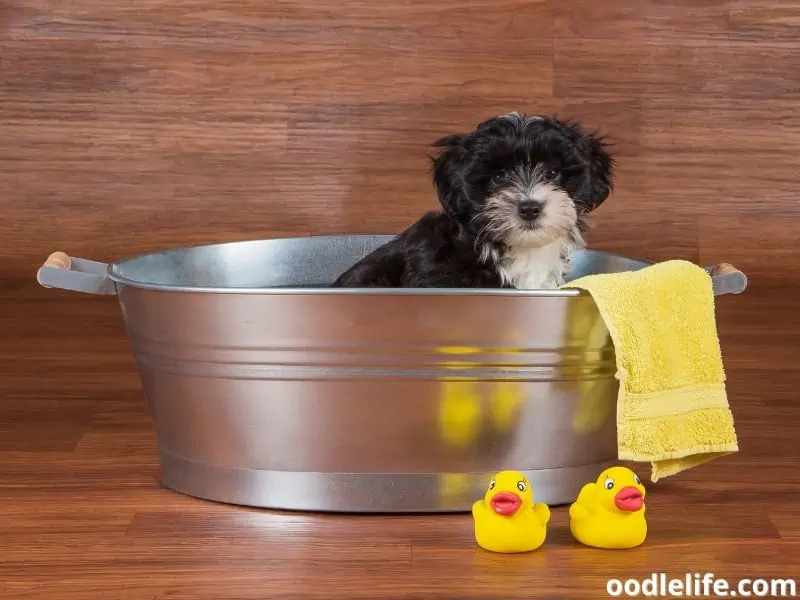
The Result
Havanese do not require as much grooming and care that Maltese dogs do.
Feeding
One benefit of small dog breeds is they will consume much less food than larger breeds. However, these two types are not immune to food allergies, which can alter their diet.
Havanese do not have predominant food allergies, although some dogs will show sensitivities and allergies to chicken and soy. These situations can make it more challenging to find a dog food brand that will not aggravate them and cause gastrointestinal problems.
Maltese dogs are more susceptible to having food allergies. However, these sensitivities will be more apparent if your pet also has environmental allergies. Some typical items that can create feeding issues with Maltese are:
- Animal proteins, such as chicken and beef
- Corn
- Dairy
- Eggs
- Soy

The Result
When comparing the Havanese vs Maltese for dietary concerns, the Havanese are likely to have fewer food allergies and sensitivities.
Temperament
Both Havanese and Maltese breeds are submissive by nature and are not known for being dominant. This trait makes them terrific companions for people of all ages. However, families with small children are not always ideal because of their small size, as children can hurt these little dogs.
These dog breeds have above-average intelligence and are not difficult to train. They are both playful, affectionate, and love to please their owners. Although they are small in stature, their personalities are large and make an impression on everyone.
Havanese are the better choice for a small dog suitable for families with young children with easy-to-manage temperaments and slightly larger size.
Alternatively, the Maltese can be fearful, jealous, and anxious around new people or children without proper socialization.
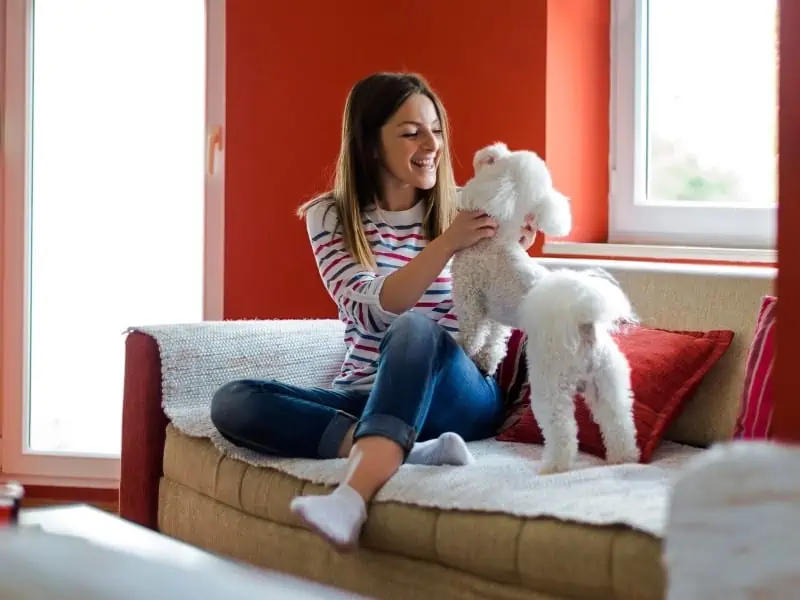
The Result
Havanese dogs are the better choice for a dog that is good with families with young children.
Energy Level
Small dogs still require ample exercise and stimulation, as is common with large breeds. However, their miniature size makes their needs easier to accommodate, especially in homes with small yards or apartments.
Both these dog breeds are high-energy dogs that will require enough activity and mental stimulation. But when comparing Havanese vs Maltese in energy levels, the Havanese will need more physical activity than the Maltese.
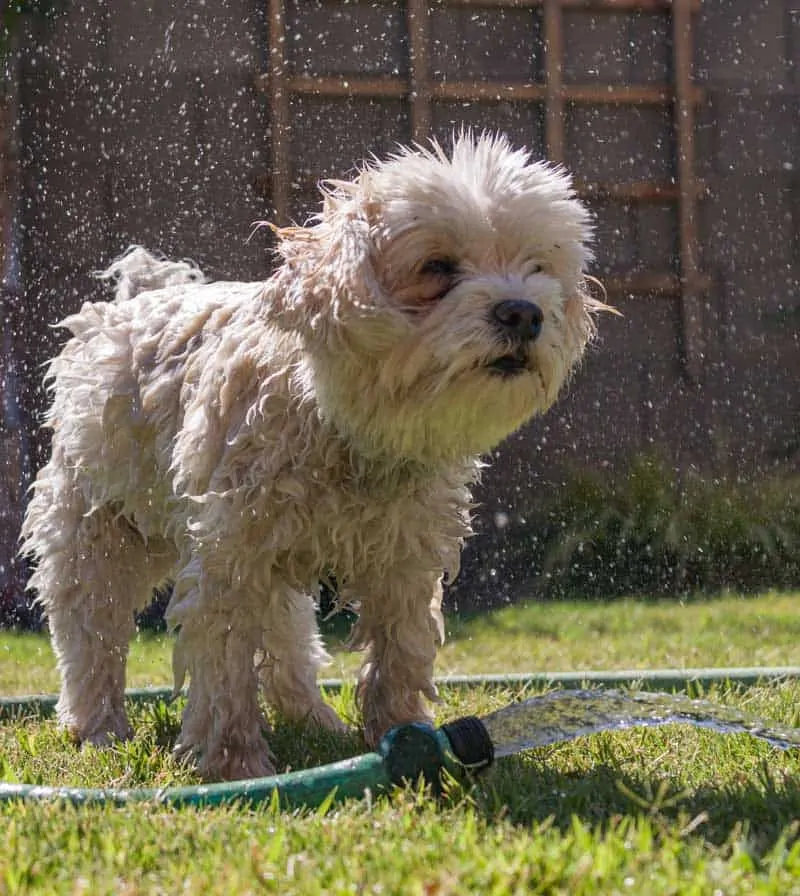
The Result
Havanese and Maltese are both high-energy dogs, but a Havanese dog will demand more exercise from you than a Maltese would.
Lifespan
These small dog breeds will live significantly longer lives than large dogs do. Even so, Havanese and Maltese pets have a lifespan between 12 and 15 years. Naturally, genetics play a large part in this, and some may live shorter or longer lives, depending on underlying health conditions.
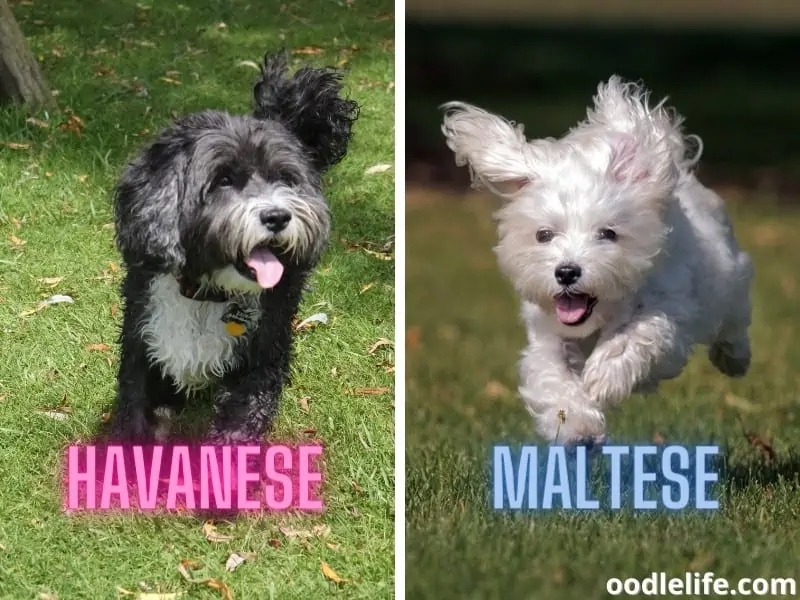
The Result
Both dog breeds can live long lives ranging between 12 to 15 years or more, depending on their genetics and care.
Health Issues
Of course, with any animal, there can be a concern for any prevailing health conditions. Therefore, if you want a healthy pet, it’s essential to thoroughly check their genetic lines, which many reputable breeders will offer to adoptive owners.
Both of these breeds share some common health issues, including:
- Deafness
- Some eye issues, like cataracts and tear staining
- Heart murmurs
- Legg-Calve-Perthes disease
- Liver shunt
- Patellar luxation
When looking at the Havanese breed, these dogs are prone to some abnormalities like shortened forelegs and undescended testicles (cryptorchidism). In addition, although they are generally healthy animals, they can sometimes suffer from dental problems and cancer.
Some more common health issues in Havanese dogs include:
- Chondrodysplasia (skeletal deformities)
- Hip dysplasia
- Hyperthyroidism (overactive thyroid) and hypothyroidism (underactive thyroid)
- Sebaceous adenitis (destruction of sebaceous glands)
Maltese are prone to White Dog Shaker Syndrome, as the breed is susceptible to tremors that plague small white dogs. Other common health problems in Maltese dogs include:
- Diabetes and hypoglycemia
- Gastrointestinal issues
- Heart problems
- Inflammatory autoimmune disease
- Respiratory concerns, like Reverse sneezing

The Result
Overall, Havanese dogs will tend to be healthier than their Maltese counterparts. Proper genetic testing and breeding are vital to keeping healthy bloodlines.
Which Is a Better Pet – Havanese vs Maltese?
There is often no correct answer for the best pet when comparing breeds. However, when you take the time to examine the Havanese vs Maltese, potential dog owners can narrow down a more suitable choice for their lifestyle.
One simple way to narrow down your choice is to assess your home and habits to explore how a pet would fit into the dynamic. Some helpful questions to ask yourself when deciding on a new dog like a Havanese or Maltese are:
- Do you have very young children in the home?
- Is there a preference for size or color?
- How much time do you want to spend grooming your dog?
- Can you meet the breed’s exercise needs?
- Are you prepared for any potential health issues?
If you have your heart set on a small breed dog, the Havanese and Maltese are both terrific choices for a pet. They are affectionate, easy to integrate into your home, and will not pose problems for allergy sufferers.
No matter which dog you choose, with the proper training and socialization, your small breed dog will be a lovable companion that will be a big part of your life for the next 12 to 15 years.